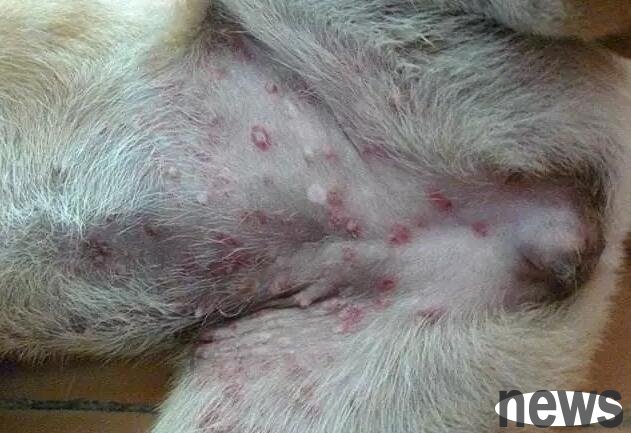Eczema in dogs is an inflammatory reaction caused by epidermal cells in dogs' skin due to allergic substances. Its characteristics are skin diseases such as erythema, papules, blisters, erosion, and scabs on the canine skin, and there are symptoms of heat, pain and itch.

1. The causes of dog eczema:
1. The causes of dog eczema are relatively complex, and are generally related to allergic complications;
2. Stimulation by various factors leads to: under the action of external physical and chemical factors, such as mechanical compression, friction, biting, scratching, mosquito bites; certain internal medicines, external medicines, disinfection drugs; unclean skin, dirt irritation, etc.;
3. Poor feeding and management conditions: factors such as moisture in the kennel irritate the body, causing skin allergies and causing eczema. Carbohydrates are more likely to develop eczema if you take too much carbohydrates. There are many diseases in seasons where the temperature is higher and the humidity is higher. In my country, summer and autumn are the most common in May and September;
4. Nutrition deficiency: If a dog lacks vitamins and trace elements, it will cause the dog's skin to be low and can also cause eczema.
2. Key points for diagnosis of dog eczema:

a), Acute eczema:
1. The affected area is dot-shaped or different shapes. Itching can be seen in the affected dog;
2. As the disease develops, papules, blisters, pustules, and erosion may occur. For example, most of them are infected with microbial infections during the pustule and erosion period, and the skin smells abnormally. And they all have itchy skin;
3. Sometimes skin damage caused by scratching and friction caused by dogs makes dermatitis worse;
4. Typical acute eczema is wet small papules, and there are small scattered blisters on the papules, and some of them are visible in eczema;
b), chronic eczema:
1. Mostly due to the transformation of acute eczema;
2. Repeated irritation and repeated attacks, characterized by thickening of skin, desquamation, pigmentation, thick and hard coats, reverse erectile dysfunction, and aggravation of itching;
3. More common on the back or limbs;
3. Prevention and treatment measures for dog eczema:
1. Desensitization, stop exudation, prevent infection, and promote rehabilitation.
2. Adrenocorticosteroid therapy: use dexamethasone tablets 0.2 mg/kg body weight, oral or 1.0 mg/kg body weight, oral. Apply fluorine acetate or triangular acetate ointment on the affected skin. To prevent skin infection, you can apply alternately with erythromycin ointment. 3. Penicillin and gentamicin can be injected intramuscularly during the pyocellular phase to prevent infection. For cases with severe symptoms, mixed with dexamethasone injection can be injected intramuscularly, twice a day.
4. Reduce or stop self-damage and relieve itching: Sedatives can be given, or a sick dog can be put on a neck ring to prevent further chewing on the affected area.
5. Perform drug treatment: After using antibiotic cords with steroids for 24 hours, the wound will dry and a scab will form after several days. 6. Those who have recurring illness should pay attention to food therapy and replace certain feeds.
